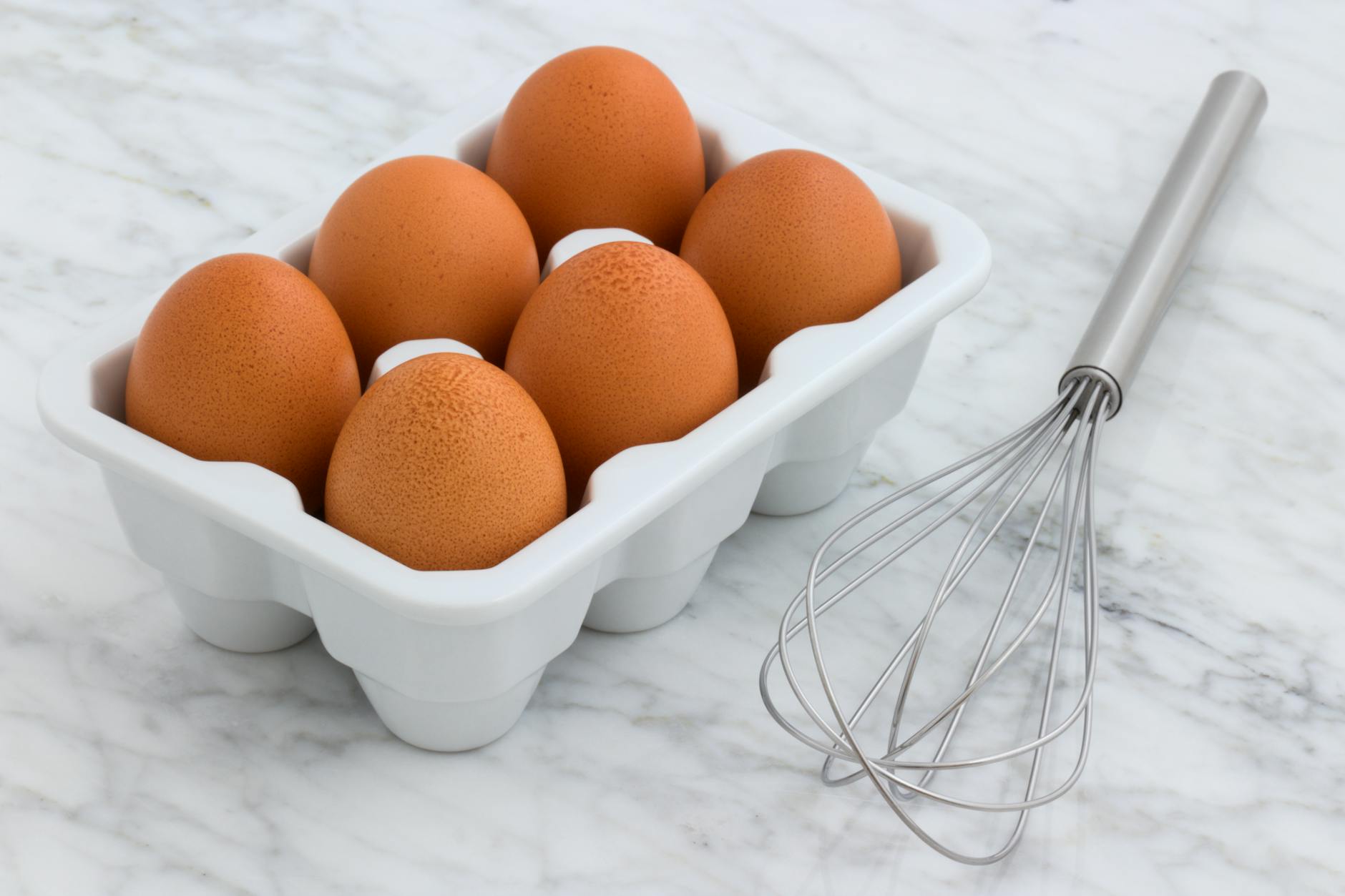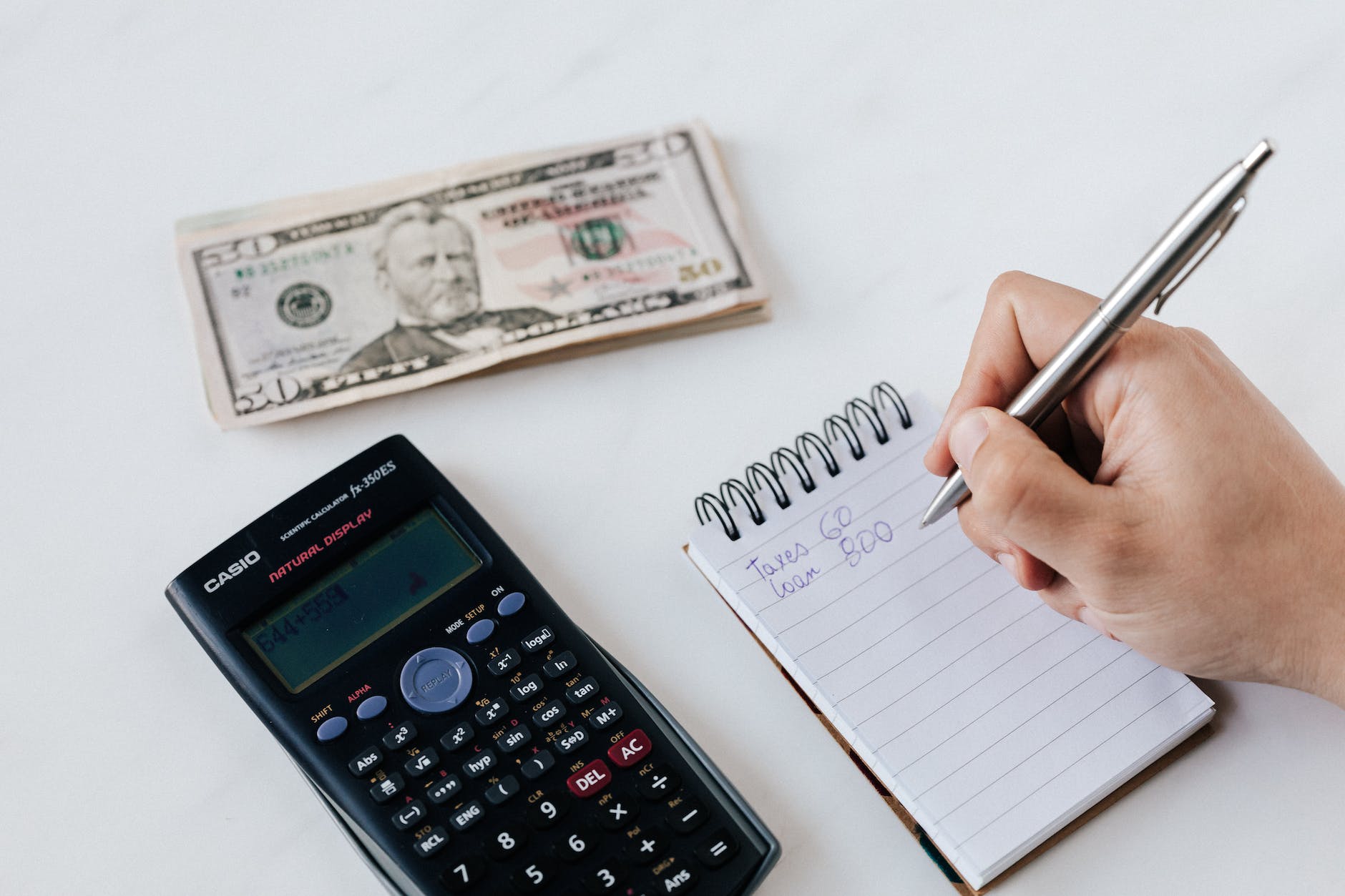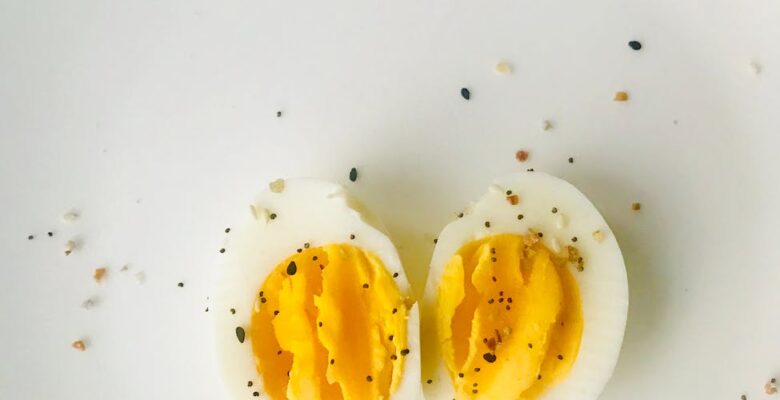If you’re not eating 100 grams protein a day, it can be difficult to figure out how to get there. You may believe that you must meal prep, batch cook, or regulate your portions, but this is not always the case.
Personally, I don’t do any of these things. I prepare every meal before eating it. It may appear to be a lot of effort, but it isn’t if you have the appropriate mindset and skills. Here are my two most important suggestions:
PS: I’m not opposed to meal planning or batch cooking. If it’s working for you, keep doing it!
Tip No. 1: Begin with the protein.
To begin, I approach each meal from a protein-first standpoint. Rather than saying, “I feel like eating pasta tonight,” I start with, “I want to have chicken tonight; what can I pair it with?”
Protein is an afterthought in the first method. In the latter case, I begin with my protein source and then add the carbohydrates.
Consider the following example:
When it comes to breakfast, I start by deciding on my protein source: eggs and chicken sausage. Then, I decide whether to serve it with sourdough bread and butter or oats and fruit.

Similarly, when I’m planning a meal, I start with the protein: a slow-cooked beef shoulder roast. Then I decide on my sides, which are butternut squash and rice with yogurt.
Snacks are a little unusual. If I want to have a homemade chocolate chip cookie, I might add a cup of collagen-enriched milk to it. If I want to munch on fruit, I might add some cheese or yogurt to it. The process is reversed with snacks.
So, if you want to consume 100 grams of protein each day, the first step is to change your mindset about eating. Begin by deciding on the protein, and then go on to the sides.
Tip #2: Keep a food diary.
This, I’ll admit, is the most difficult aspect. It will add 15 minutes to your day, but the return is well worth it. What’s more, the best part? You don’t have to do it indefinitely. Just commit to 2 to 4 weeks until you’ve mastered macros.
Personally, I use an app called Cronometer, which is really fantastic. They have nearly every cuisine possible in their database, making meal logging a breeze.
You may also scan the barcode of things you buy at the store to get the exact measurements on the label.
For example, if I’m going to eat 2 eggs fried in butter, 1 chicken sausage, 1 huge slice of sourdough with marmalade, and a cup of blueberries, I’ll need to calculate the calories.
Tracking is vital because
- 1) it enables you to determine how much protein you are presently consuming and how much more you need to take in order to attain 100 grams per day.
- 2) It enables you to determine how much protein is derived from each of the meals you consume.
- 3) It is an excellent approach to gaining an awareness of the micronutrients found in various foods, which is useful information for optimizing your diet.
To summarize, if you prioritize protein and keep track of your meals, you’ll be 80% of the way to meeting your protein intake targets. It doesn’t really matter when you eat your protein after that.
Go ahead and eat a lot of protein in one meal and moderate or low protein in the others. If you wish, you can divide it into three meals and one snack. It is a fallacy that your body can only process so much protein in one session. You don’t need to be concerned unless you consume more than 200 grams of protein per meal.
Now consider an example day in which I easily consume 100 grams of protein:
Breakfast:
- 1 cup whole milk (8 g)
- 1 scoop (12 g) collagen
- 1 spoonful (0 gram) honey
- 1 cup of blueberries (0 g)
20 grams in total
Brunch:
- 2 eggs (12 g)
- 1 tablespoon (0 gram) butter
- 3 ounces (180 g) canned wild salmon
- 1 large sourdough slice (5 g)
- 1 teaspoon date syrup (0 g)
- 1 orange (100 g)
- 3 oz (4 g) chocolate
41 grams in total

Snack No. 1:
- 1 banana (0 g)
- 1 tablespoon (4 g) peanut butter
- 4 grams in total
Dinner:
- 8 oz ground beef (42 g)
- 1 tablespoon (0 gram) butter
- 1 cup cooked rice (zero-g)
- 1 cup plain Greek yogurt (9)
51 grams in total
Snack No. 2:
- 1 cup milk (8 g)
- 1 spoonful (0 gram) honey
- 5-gram sourdough banana bread
- 2 teaspoons maple syrup (0 gram)
13 grams in total
I ingest 127 grams of protein every day, which works out to around 0.9 grams per pound of body weight. I need a minimum of 2200-2500 total calories each day because I am physically active; thus, I feel fine consuming that quantity of protein. You’re doing excellent if you eat 100 grams of protein every day! If you are physically active and wish to consume more protein, you can, but it is not necessary and will not result in any additional benefits.
Tips for Eating 100 Grams of Protein Per Day
Now that you know why protein is important, how to assess your protein needs, and how to meet those needs, I’d like to give some pointers to help you get started on the right foot:
1) Include protein in all meals.
I stated it before, but it bears repeating. Rather than cramming a lot of protein into one or two meals, arrange your meals around a protein source and then add sides.
2) Consume a diverse range of protein sources.
Eating the same protein source for every meal might rapidly get monotonous. Find protein sources that you appreciate and combine them in novel ways. Instead of having a simple omelet every morning, spice it up with turkey bacon or cottage cheese. Instead of baking chicken every day, make a slow-cooked chicken stew, a chicken curry, or chicken tacos. Have fun with it, and be creative!
3) Drink plenty of water.
I am thirstier after eating higher protein meals. This is most likely due to the fact that protein metabolism generates waste products, which are eliminated by the kidneys and require water. Furthermore, the enzymes and digestive juices that break down proteins rely on water, and because protein has a stronger thermic effect, the body may require more hydration. Finally, I tend to use more salt when I consume protein, which naturally makes me thirstier. In a nutshell, stay hydrated. You don’t have to measure or count anything; just drink enough to quench your thirst.
4) Commit to it for a month.
It takes time for new habits to become ingrained in your daily life. Changing how and what you eat will be challenging at first, and you may have days when you just want something quick and low in protein. For at least a month, resist the urge to do so. After a month, you will notice improvements in how you feel and look, which will serve as a natural drive for you to continue doing what you are doing.
5) Don’t get too worked up over it.
I know I said to keep track of your meals, but don’t worry about every gram of protein. Meals are supposed to be joyful. Avoid having an unhealthy relationship with food. It’s fine to eat cookies or ice cream without protein as long as the majority of your meals contain protein. You are free to eat whatever you want.
6) Think about your budget.
In general, protein sources are more expensive than non-protein ones. If money is a concern, look for low-cost alternatives. Purchase in bulk and freeze as much as possible. There are numerous methods for saving money. A tight budget is not an excuse for not eating adequate protein.

7) Vegetarians must put in more effort.
Getting enough protein can be 100 times more difficult for vegans and vegetarians, but it is entirely doable with the proper knowledge and strategy. In the future, I’ll create a piece about how a vegetarian can consume 100 grams of protein every day. Keep an eye out!
To Conclude
Protein consumption has various long-term health benefits. Protein is essential for maintaining muscle growth as you age, as well as optimizing muscle recovery, cellular repair, metabolism, immune system function, hormone synthesis, blood sugar regulation, mood, and sports performance.
